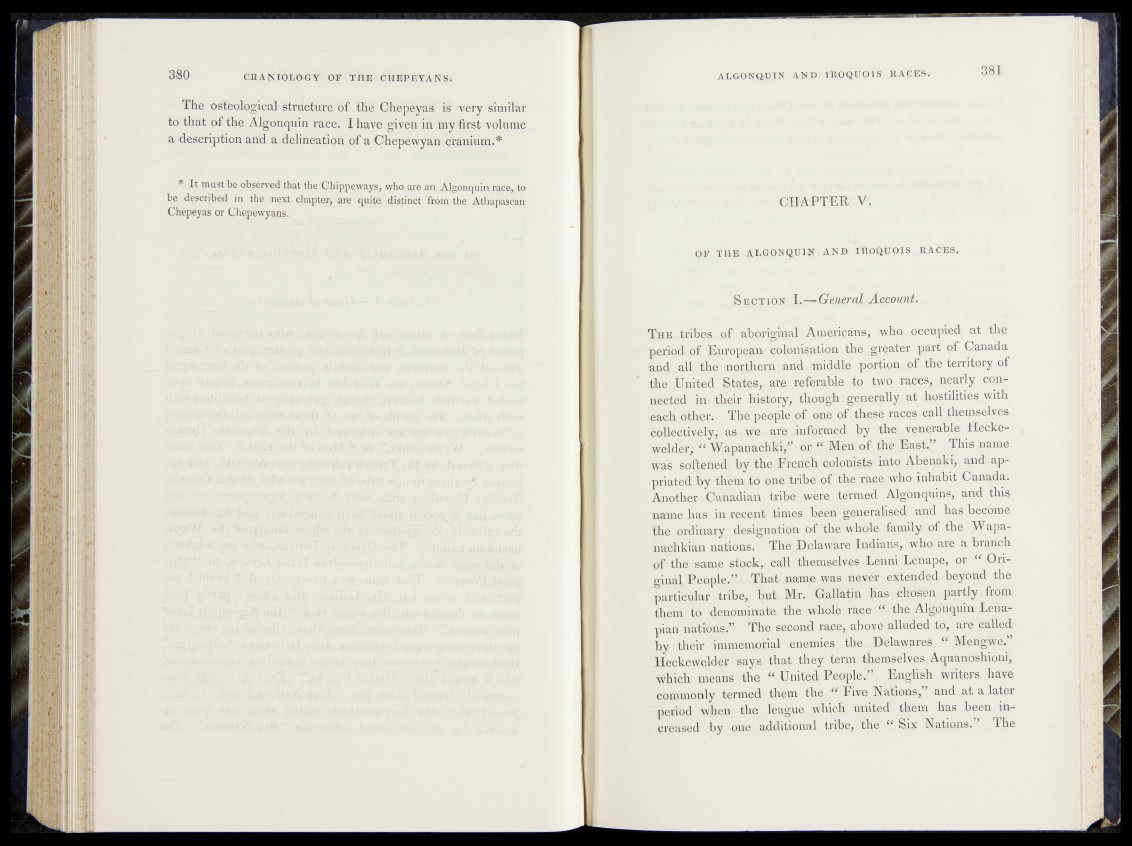
The osteological structure of the Chepeyas is very similar
to that of the Algonquin race. I havfc given in my first volume
a description and a delineation of a Chepewyan cranium.*
* It must bo observed that the Chippeways, who are an Algonquin'race, ito
be described^) the next chapte/yare quifq distinct from the Athapascan
Chepeyas or Chepewyans,
CHAPTER V.
OF THE ALGONQUIN -AJÏD IROQUOIS RACES.
S ect ion ~L.—Getier ah Account.
The tribes, of aboriginal Americans,- who ^occupied at,- the
"period of European colonisation the greater part of Canada
and, all the northern and middle portion of the territory off
,|heVnited States, are referable to two rac£S*< nearly, connected
.in thejr history, though generally at hostilities with
each other.^ -The people of one of these races call themselves
collectively, as we are informed ,by the venerable Heckp-
weldpr, g Wapanachki/’. or “ Menjof the East.” Thismaipf
was softened by the'French colonists into. Abenaki, and ap-
priatedTby them to one tribe of the race who inhabit Canada.
Another Canadian tribe were termed Algonquins, and this
name has in recent times been generalised and has, become
the ordinary, designation of the whole family-.of the.. Wapa-
nachkian nations; The Delaware. Indians, who are a branch
of the same stock, call .themselves Lenni Lenape, or “ Original
People.” That name was never extended beyond the
particular tribe, but Mr. Gallatin has chosen partly from
them to denominate the whole race “ the Algonquin Lena-
pian nations.” The second race, above alluded to, are called
by their immemorial enemies the Delawares “ Mengwe”
Heckewelder says that they term themselves Aquanoshioni,
which means the “ United People^ English writers have
commonly termed them the <( Five . Nations, and at a later
period when the league which .united them has been in-
, creased by one: additional tribe, the “ Six Rations.” . The